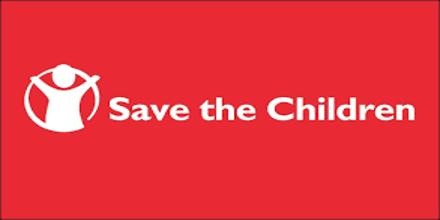Save the Children International Bangladesh Country Office
Save the Children, is a globally active non-governmental organization which promotes children’s rights, provides relief and helps support children in developing countries. In order to improve the lives of children through better education, health care, and economic opportunities, as well as providing emergency aid in natural disasters, war, and other conflicts it was established in the United Kingdom.
In addition to the UK organization, there are 28 other national Save the Children organizations who are members of Save the Children International, a global network of nonprofit organizations supporting local partners in over 120 countries around the world.
In order to gain more rights for young people Save the Children promotes policy changes, particularly by enforcing the UN Declaration of the Rights of the Child. Alliance members organize emergency-relief efforts, helping to protect children from the effects of war and violence.
History
The Save the Children Fund was founded in London, England, on April 15, 1919 by Eglantyne Jebb and her sister Dorothy Buxton as an effort to alleviate starvation of children in Germany and Austria-Hungary during the Allied blockade of Germany in World War I.
The Fight the Famine Council was initially started earlier in 1919 in order to put political pressure on the British government to end the blockade. However, on April 15, 1919, the sisters succeeded in separating itself from the politics of the Council and creating a separate “Save the Children Fund”.
In May 1919, the Fund was publicly established at a meeting in London’s Royal Albert Hall in order to “provide relief to children suffering the effects of war” and raise money for emergency aid to children suffering from the wartime shortages of food and supplies.
In December 1919, Pope Benedict XV publicly announced his support for Save the Children, and declared December 28 ‘Innocents Day’ in order to collect donations.
The first branch was opened in Fife, Scotland in 1919. A counterpart, Rädda Barnen (which means “Save the Children”), was founded later that year in Sweden, and together with a number of other organizations, they founded the International Save the Children Union in Geneva on January 6, 1920. Jebb built up excellent relationships with other Geneva-based organizations, including the Red Cross who supported Save’s International foundation. Jebb used many new ground-breaking fund-raising techniques, making Save the Children the first charity in the United Kingdom to use page-length advertisements in newspapers. Jebb contracted doctors, lawyers and other professionals in order to devise mass advertisement campaigns. In 1920, Save the Children started individual child sponsorship as a way to engage more donors. By the end of the year, Save the Children raised the equivalent to about £8,000,000 in today’s money.
In Bangladesh, Save the Children started its activities in1972. Today, in more than 120 countries, Save the Children is transforming children’s lives by providing families and communities with the tools they need to break the cycle of poverty. While their programs are diverse, their mission is singular – to create lasting, positive change in the lives of children in need around the world. Save the Children sees its role as that of a catalyst in community evolution. They favor a multi-disciplinary approach, acknowledging that the problems we address — poverty, illiteracy, poor health — are complex and interrelated. Innovation and experience have been the keys to Save the Children’s success.
In partnership with individuals, foundations, corporations, governments, national and international agencies, their programs focus on results and proven solutions.
Activities
Save the Children has been working in Bangladesh since 1972 to implement integrated community development programs. Health, Population and Nutrition (HPN), Education, Field Operations and Disaster Management are their program focus point. Save the Children has worked through direct implementation and partnerships in many parts of the country, including Dhaka, Chittagong, Barisal, Khulna, Rajshahi and Sylhet divisions. Through the various programs the Bangladesh Field Office ensure benefits to 20 million Bangladeshis with a special focus to poor and disadvantage population.
The core programs in which Bangladesh Country Office of Save the Children International (SCI) concentrates are Early Childhood Education, Primary Education, School Health Nutrition, Neonatal Health and Adolescent Reproductive and Sexual Health. At present SCI have ten sub offices out of Dhaka, in Khulna, Bandarban, Habigong, Barisal, Sylhet, Meherpur, Chittagong, Cox’s Bazar, Patuakhali and Barguna.
Programs in Bangladesh
Education Programs
The Education sector includes two core programs: Early Childhood Development and Primary Education. The goal of the education sector is to ensure the rights of children by enabling their parents, as well as community members to meet their basic learning needs including knowledge, skills and attitudes for better living in their own environment.
Early Childhood Development: The Early Childhood Development program includes Home Based Early Learning Opportunity Centers (HBELO) and Home Based Preschools (HBPS) in Nasirnagar. In these home based centers, children are involved in indoor-outdoor play, rhymes, songs and storytelling sessions. Parents and caregivers are offered ECD related training to increase their knowledge and confidence on child rearing.
Primary Education: The Primary Education program includes both in and out of school children in the range of 6-15 years for more accessibility to and availability of primary education opportunities. The out of school children in the same age range along with some adolescents are involved in the child-centered program Child-to-Child (CtC). The CtC program uses the 6-step approach to build their own capacity to identify problems and issues, plan intervention, implement and evaluate them. “Lokokendra” have been established to organize social awareness campaign. These are basically community learning and resource centers where children come to read books and learn developmental skills.
Health Programs
Health, Population and Nutrition Program: The overall goal of the Health, Population and Nutrition programming is to bring about sustainable improvements in the health status of individuals, families and communities, with special attention given to women and children, particularly the disadvantaged.
School Health and Nutrition Program: The goal of the School Health and Nutrition program focuses on school going children is to improve their health and nutrition status. The key activities include provision of health services including de-worming, Vitamin A and iron supplementation and first aid kits are provided to school-going children. Health Education on sanitation, hygienic behavior, nutrition and reproductive health issues are provided to school children. To create a safe and healthy learning environment and a supportive learning atmosphere, arsenic free water and proper latrines are provided. School Management Committee and Parent Teachers Associations are mobilized to maintain the general health and hygiene of the students.
Adolescent Reproductive and Sexual Health program: The Adolescent Reproductive and Sexual Health program, also known as “KAISHAR” (Knowledge and Attitude Improvement of Sexual Health for Adolescents’ Responsibility) targets adolescents of 10-19 years to improve their reproductive and sexual health. The key activities under the KAISHAR program are peer education, development of tool box, life skill training in school, training for service providers, provision of ARSH health services and establishment of information outlets and workshops for gatekeepers.
Nutrition and Child Development Program (NCDP): Nutrition and Child Development Program (NCDP) addresses nutrition problems for children below three years. The NCDP uses the positive deviance approach under which a mother practicing good nutrition and hygienic behavior is used as a model for other mothers to follow.
SCI is working in partnership with Government on Expanded Program of Immunization (EPI) and National Immunization Day (NID) to improve the routine immunization coverage. This program focuses on children who are not vaccinated and in hard to reach areas. In addition, the adolescents of KAISHAR program will utilize the Tetanus Toxoid (TT) and reproductive health services through the Government facilities.
The Saving Newborn Lives (SNL): The Saving Newborn Lives (SNL) initiative in Bangladesh funded by Gates Foundation is working to strengthen and expand Essential Newborn Care (ENC) in the country since 2000. The initial focus is on provision of ENC for all newborns. BFO is implementing cost-effective, sustainable essential newborn care package at community and household level through partnership with the government and several leading NGOs (CARE, BRAC, BPHC and ICDDRB).
HIV/AIDS Programs
The BFO has been working on HIV/AIDS since 1995 and implements a preventive strategy in the rural areas, which promotes safer sex behavior to reduce vulnerability of adolescents as the primary target with an additional focus on HIV/AIDS/STD awareness across all programs. SCUSA has also building capacity of its own staff members on HIV/AIDS related issues in Bangladesh.
Field Operations and Disaster Management
Disaster Management Program Section: The Disaster Management Program Section focuses on children and women to ensure that specific child and gender issues are highlighted and given due attention during emergencies. Save the Children US is leading the Save the Children Alliance to ensure support in all kinds of emergencies and disaster in Bangladesh. Save the Children US emphasizes rapid response to emergencies in order to save children’s lives and protect their well-being.
Over the years, Save the Children International in Bangladesh has positioned itself as a national player through its development programs to participate in national strategic responses to emerging threats, such as arsenic and HIV/AIDS. Save the Children International believes both collaboration and partnerships are necessary for achieving scale and impact and has focused attention on contributing to national, regional, and local level form. SCI also has an excellent collaborative partnership with MOHFW, MOE and MOA. Save the Children is a member of various Networks of Bangladesh.
The Bangladesh Country Office made significant progress in improving the quality and innovation in its programs in the recent years. There have been new initiatives to provide the office a strong base with a new look — more impressive to the external audience, searching for new strategic opportunities and ensuring quality program activities.
Financial Condition
Save the Children receives income from a wide variety of sources including individuals, foundations, governments and companies. These valuable contributions make it possible for them to secure improvements for children all over the world. They have a clear responsibility to the world’s children, and to all of their supporters, to make the best possible use of these resources.
To improve their cost-effectiveness, Save the Children International works together with partner organizations where feasible. SCI spend as much money as possible on programs which benefit children directly. Most of these programs are based in the world’s poorest countries, where millions of children struggle to survive and thrive.
Save the Children national organizations also operate domestic programs to meet the particular needs of children in their own country.
They are committed to managing the funds in a fully accountable way. Effective administration does cost money, but they try to keep this cost as low as possible. Save the Children is working to align their financial processes, planning and reporting through the transition to one Save the Children where, instead of many member organizations delivering programs in a particular country, there is only one Save the Children organization – bringing significant cost efficiencies in-country as well as across the rest of the organization. This allows them to focus more on working for children.
These are the recent picture of SCI, which are showing the income sources, expenditure by sector, expenditure by region and expenditure by program area.
Structure of Regional and Central Finance Departments
The Save the Children International finance function is headed by the Chief Financial Officer who has overall responsibility for the organization’s financial activities. Based in London, the CFO is supported by the Finance Director International Programming, the Chief Accountant, the Director of Financial Strategy, Planning and Reporting, and the Head of Global Assurance. The Finance Director International Programming works through the regional finance directors who are responsible for the support and oversight of the country office financial activities.
Based on the nature of responsibility and work Country office finance department can divide into four parts. A short description of those is given bellow:
Grants & Awards: Save the Children International (SCI) is a donor based welfare organization. So maintain a good relation with donor by providing necessary and clear financial information of expenditure and report is very important. On the other hand SCI works with different national and international organizations to accomplish its activities properly. The partner organizations with which they achieve their activities are called Sub-grants. Grants are those projects in which donor are donate directly. Grants & Awards division has these two part Grants & Sub-grants.
Grants division is responsible for grants management, grants development and donor compliance of the Global funded HIV/AIDS project including ensuring grant is developed and managed in line with SCI and donor Grants policies, support in preparing/overseeing cost proposals, overseeing amendments or modification to donor contract or budget, supervising tracking of all communication with donors, monitoring grant budget, record keeping and updating all grant related documentation, and preparing reports as per Global Fund requirements.
Sub Grants is mainly responsible for partners’ contracting and partners’ financial monitoring of Bangladesh Country office program Partners including formulation of procedures in line with global policy, ensuring preparation of partner contracts and amendments, preparation of partners budgets and phasing of budgets, accounting and tracking of partner payments, preparation of partner disbursements and supporting payables unit in estimating the fund requirement for partners. This will ensure financial monitoring of partners at field level, desk review of Partners financial reports, coordination with other finance units and budget holders on partner related issues, preparation of partner performance reports for internal decision making and ensure review of monitoring reports of partners.
At present SCI has 68 Grants. A list of Grants, donor of those grants, partner NGO’s of those Grants (Sub-grants) and location are given in the Appendix.
Financial Management Department consists with three sections. They are FMS (financial management system), Accounts & Treasury and Financial Analysis & Budgets
Conclusion
Save the Children International is globally recognized welfare organization for deprived children. They collect fund from different governmental, individual and corporate organizations and committed to managing the funds in a fully accountable way. SCI mission is to provide maximum benefits to the poor and deprived children; as a result it spends as much money as possible on programs which benefit children directly. Most of these programs are based in the world’s poorest countries, where millions of children struggle to survive and thrive. In order to accomplish the mission, its finance department always tryst to minimize the expense of SCI by properly manage the financial activities of the organization.
They operate their financial management process in a cost effective way which ensures the organizations goal to provide maximum benefit the children. SCI is successful to achieve their goal to a large extant but still they have some problems regarding the financial management process as well as in human resource management, if they can overcome those problems they can manage their activities more efficiently as a result it will be more easier to achieve their mission.
















